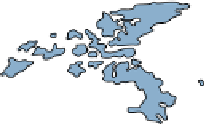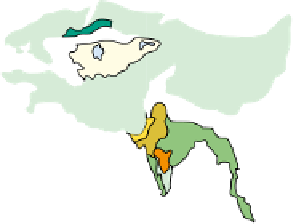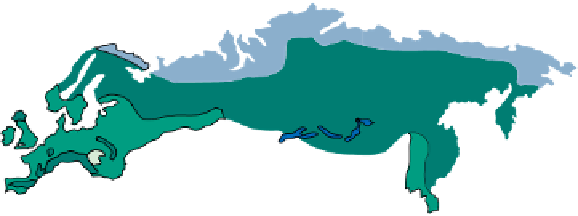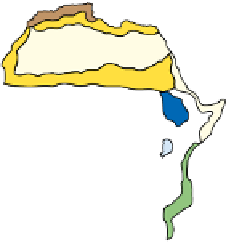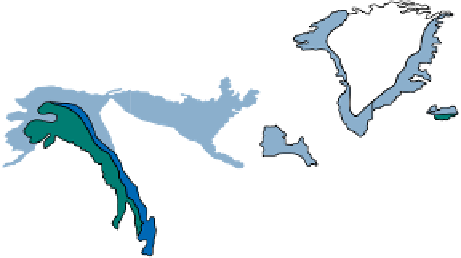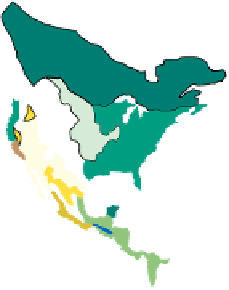Environmental Engineering Reference
In-Depth Information
release large quantities of heat and pollutants. As a re-
sult, cities tend to have more haze and smog, higher
temperatures, and lower wind speeds than the sur-
rounding countryside.
Why is one area of the earth's land surface a desert, an-
other a grassland, and yet another a forest? Why do
different types of deserts, grasslands, and forests exist?
The general answer to these questions is differences in
climate
(Figure 5-2), resulting mostly from differences
in average temperature and precipitation caused by
global air circulation (Figure 5-4). Different climates
support different communities of organisms.
Figure 5-7 shows how scientists have divided
the world into 12 major
biomes.
These terrestrial re-
gions have characteristic types of natural communities
adapted to the climate of each region. What kind of
biome do you live in?
5-2 BIOMES: CLIMATE AND LIFE
ON LAND
Why Do Different Organisms Live
in Different Places?
Different climates lead to different communities of
organisms, especially vegetation.
Tropic of
Cancer
Equator
Tropic of
Capricorn
Semidesert,
arid grassland
Mountains
(complex zonation)
Arctic tundra (polar grasslands)
Desert
Tropical rain forest,
tropical evergreen forest
Tropical deciduous forest
Boreal forest (taiga), evergreen coniferous
forest (e.g., montane coniferous forest)
Temperate deciduous forest
Ice
Temperate grassland
Dry woodlands and
shrublands (chaparral)
Tropical scrub forest
Tropical savanna,
thorn forest
Active Figure 5-7
Natural capital:
the earth's major
biomes
—the main types of natural vegetation in various
undisturbed land areas—result primarily from differences in climate. Each biome contains many ecosystems
whose communities have adapted to differences in climate, soil, and other environmental factors. Humans have
removed or altered much of this natural vegetation in some areas for farming, livestock grazing, lumber and fu-
elwood, mining, and construction.
See an animation based on this figure and take a short quiz on the concept.
























